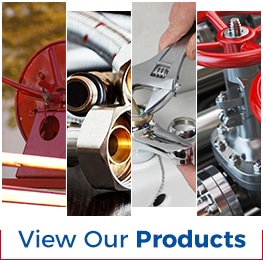
With the significant number of valves currently in the market, it can be difficult to know which type to purchase. Each type offers particular benefits and advantages specific to their intended uses. In this blog post, for example, we will cover ball and saddle valves –– both of which are excellent and best suited for slightly different purposes. Keep on reading to learn more.
An Introduction to Valves
Invented by Thomas Newcomen during the Industrial Revolution, it is not an exaggeration to say the modern-day valve has revolutionized the plumbing industry. Without valves, we would struggle regulating the flow of gasses and liquids –– especially now that we can do so at the turn of our fingers.
Not all liquids and gasses are handled the same way, which is part of what explains why we have so many valves to choose from. Let us tell you about two very popular ones.
Ball valves
Ball valves are among the most popular type of valves currently available. One of the things that sets ball valves apart is that they can open and close immediately, which is what you want for your kitchen and bathrooms. A faucet that doesn’t completely shut off can be very expensive and cost you a high water bill –– not to mention that it can also cost you peace of mind.
There is one caveat, however. A ball valve should not be used for faucets that release water at high pressure. This is because when you quickly shut off water pouring out at high pressure, for example, you risk sending shock waves to the pipes and damage them in the long run. One way to mitigate such risk is by closing the ball valve slowly when in operation, or just using a different set-up altogether.
Saddle valves
The saddle valve gets its name from its structure: it has a hole in the middle for the pipe to go through, giving the appearance of the valve saddling it. There is a small needle at the top of the valve that, when it wraps around the pipe, can pierce through it, which makes the saddle valve very prone to dripping and leaking water. As you can imagine, a pipe that leaks can damage your plumbing infrastructure and cost you very expensive repairs in both the short and long term. The saddle valve is so susceptible to leaking that the Uniform Plumbing Code has banned it, which makes it worthwhile to consider other alternatives instead.
In Short
Now that you know some more about two major types of valves, you are hopefully better prepared to make an informed decision. If you still have questions or would like to know about other valves, don’t hesitate to contact us. Here at ASJ Industrial Hose and Fittings, our team is always ready to help. Give us a call today: (951) 735-1351.



 Phone:
Phone: